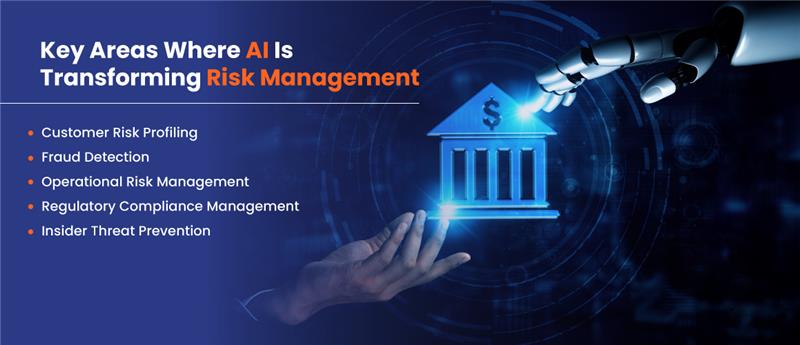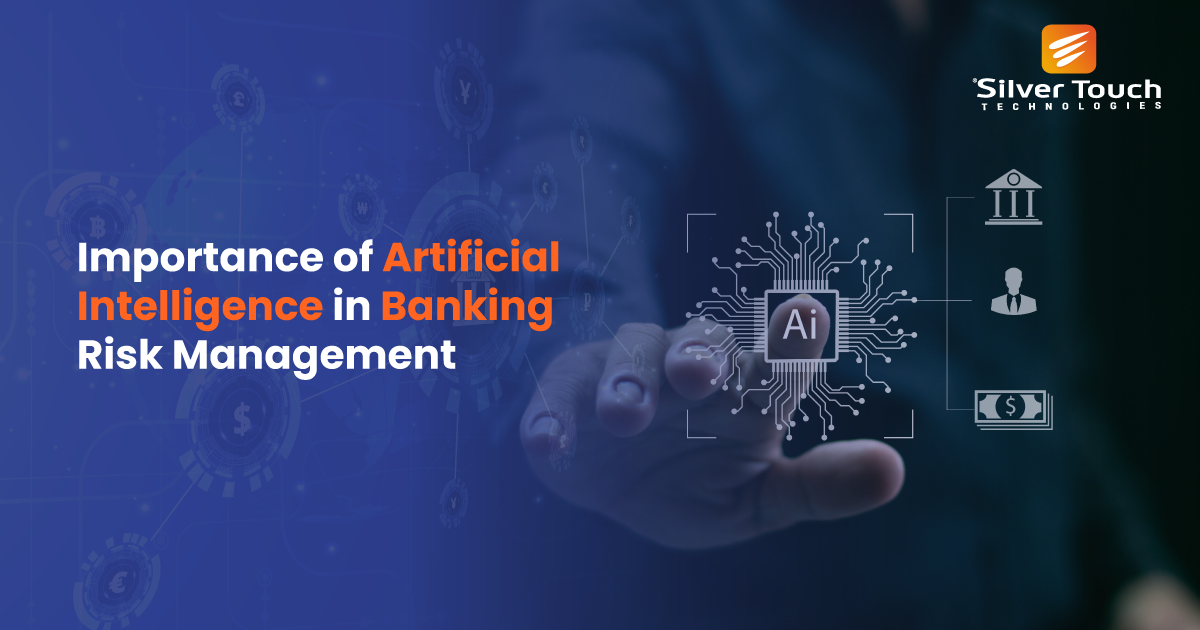The rise of Artificial Intelligence is visible in core industry sectors, and banking is no exception! As this rapidly growing sector relies heavily on large volumes of data, AI in banking can enable bankers to accelerate processes, reduce costs, and improve customer services. Apart from these applications, AI plays a vital role in risk management. Whether they are credit-related or transaction-related risks, artificial intelligence in banking can manage them effectively.
This blog talks about the crucial role of AI in banking risk management. We will understand challenges of traditional risk assessment methods in banks and how AI can address them. Let’s start with the importance of risk management in the modern banking system.
Importance of Risk Management in Modern Banking
The modern banking sector is highly diversified and works in a competitive scenario while addressing compliance-related requirements and heavy regulations. Risk management is a process that involves strategies and practices to identify, assess, and prevent potential risks that could affect the bank’s operations. As a critical function, risk management ensures that the modern banking system protects stakeholders’ interests and achieves sustainable growth.
Robust risk management can protect banks from significant losses by safeguarding the bank’s capital. It is also useful for maintaining public trust in the banking system to attract more deposits. The modern banking system can effectively prevent liquidity risk and compliance risk with the help of an advanced risk management system. Risk management enables banks to identify and mitigate potential threats to optimize their risk-return profile.
Challenges of Traditional Risk Assessment Methods
The traditional risk assessment methods pose several challenges in the rapidly evolving banking sector. As these methods depend on past data to predict future trends, they may fail to capture emerging risks or predict the shift in market dynamics. Moreover, traditional methods rely on expert judgement. It brings the chances of subjective biases and inconsistencies. As these methods operate individually, a risk of a fragmented view is always present. Chances are high that such methods may overlook interconnected risks and cascading effects.
Emergence of AI in Banking Risk Management
AI in banking risk management can transform the process by offering sophisticated tools. AI enables bankers to overcome the limitations of traditional methods. As AI algorithms can process and analyze vast datasets with high accuracy, it is possible to identify intricate patterns. This can improve fraud detection and anomaly identification, which leads to more precise credit risk assessment.
The rise of artificial intelligence in banking is also useful for implementing proactive risk mitigation strategies. These days, AI has become an indispensable asset for banks for navigating the complexities and managing risks of the modern financial landscape. Let’s go through key areas of transformation for AI in banking risk management.
Key Areas Where AI Is Transforming Risk Management
AI algorithms can transform risk management in different ways. Here are some of the applications of AI in banking risk management.

- Customer Risk Profiling
AI in banking is useful for analyzing the customer’s data, including transactions, behavioral patterns, and credit history. Banks can identify high-risk profile customers easily with unusual transaction patterns and overarching payment.
- Fraud Detection
It is one of the most popular uses of AI adoption in banking. Fraudsters and cybercriminals can perform several fraudulent activities to gain access to the customer’s accounts. But, AI algorithms can easily identify and monitor these activities and suspicious behavior.
- Operational Risk Management
Whether it is human error or inefficiency in the system, an AI-powered risk management system can easily find them. Moreover, AI can predict risks and maintenance requirements effectively to reduce operational risks in the banking sector.
- Regulatory Compliance Management
AI-powered algorithms are useful for predicting operational risk efficiency. These algorithms can identify human errors and IT failures along with compliance violations. As a result, banks can address regulation and compliance-related risks proactively.
- Insider Threat Prevention
AI can monitor the user’s behavior continuously. As a result, banks can detect and identify the sign of insider trading or fraud proactively. It helps the BFSI sector to mitigate the risk of raud and other types of financial crime effectively. These applications offer multiple benefits to banks. However, it is imperative to get the most suitable and feature-rich AI solution for banking to leverage it.
Top Benefits of Using AI in Risk Management
Using AI in risk management offers many benefits to the banking sector. Some of the major benefits of AI include
- Improved Fraud Detection
Banks can strengthen fraud detection capabilities by utilizing sophisticated data analytics and pattern recognition. AI adoption in banking makes it possible.
- Enhanced Operational Efficiency
Artificial intelligence can analyze massive datasets accurately, which is not possible for humans. It can save the time and effort of bank employees to increase their efficiency.
- Automated Compliance
AI can streamline regulatory compliance by establishing transparent and automated processes. It also ensures strict adherence to regulations while managing risks.
- Real-time Monitoring
AI can monitor diverse data sources, including transactions and market data in real time. It provides banks with timely alerts for potential risks and vulnerabilities.
- More Cost Efficiency
Artificial intelligence can automate data analysis and repetitive tasks. It can reduce the manual effort and resources significantly to save operational costs for banks. AI has a promising future in banking risk management. We will witness its prevalence in the sector over the period.
Future of AI in Banking Risk Management
A McKinsey report has revealed that bank risk management is expected to change significantly by 2025 because of new demands and market dimensions. In such a scenario, AI has a vast scope in banking risk management. We can expect the deployment of more sophisticated ML and AI models, like reinforcement learning. Future AI systems will excel at identifying non-linear relationships within vast datasets and be capable of predicting emerging threats.
Furthermore, AI in banking risk management will enhance collaboration and data sharing in the future. Banks can forge stronger partnerships with technology vendors and regulatory bodies to leverage AI risk management platforms. We can expect that such platforms will facilitate secure data sharing with high efficiency. A collaborative approach will empower the BFSI sector to gain a more holistic view of risks. It will also improve the speed and effectiveness for risk mitigation.
Concluding Remarks
Artfificial intelligence in banking can transform risk management by detecting fraudulent activities and identifying anomalies. It can increase operational efficiency and reduce costs significantly. We can expect more sophisticated AI risk management tools for implementing a holistic approach with high accuracy in the future. Banks need to consult reputed AI solution providers to leverage the advantage of this revolutionary technology in risk management.
At Silver Touch Technologies Canada, we understand the challenges of banks in identifying and monitoring risks while meeting regulatory requirements. We assist modern banks in leveraging the benefits of AI adoption in banking through our advanced and highly customized solutions. Contact us to learn more about the scope of AI in banking risk management.
FAQs
AI algorithms can analyze vast amounts of transaction data in real-time, identifying subtle patterns and anomalies that human analysts might miss. This allows banks to detect and prevent fraudulent activities more accurately.
Yes. AI models can process numerous data points beyond traditional credit scores, such as social media activity and alternative financial data.
AI-powered tools can automate the monitoring of regulatory changes and ensure adherence to complex compliance requirements.
AI can analyze operational processes, identify potential bottlenecks, and predict equipment failures or system outages.
While AI significantly enhances risk management capabilities, it is not meant to replace human experts. Instead, AI acts as a robust tool that augments human intelligence, allowing managers to focus on more complex strategic decision-making.



